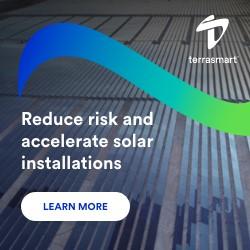Siemens Gamesa to build a pioneering 194 MW wind farm in Australia that will incorporate a battery energy storage system
The company has been awarded an EPC contract for the entire project, which will encompass a wind farm with 56 turbines and a 20 MW / 34 MWh lithium-ion (Li-ion) battery
Siemens Gamesa Renewable Energy (SGRE) has been commissioned to build a pioneering wind complex in Australia, which will combine the installation of a wind farm with 56 of the firm's SG 3.4-132 turbines (for total capacity of 194 MW) with a battery energy storage system.
It is worth highlighting the fact that this complex has already secured two power purchase agreements (PPAs): one with the government of the state of Victoria for the next 15 years; and the other with the Australian agribusiness Nectar Farms -who will use LED light technology to grow tomatoes in glasshouses- for the next 10 years.
Nectar Farms will also receive the power stored in the batteries during low wind periods. The energy supplied directly from the wind farm, at lower cost than available from the grid, helped its business case to proceed. It is estimated that 97% of this companys needs will be supplied by 15% of all of the electricity generated at the wind plus storage facility, with the rest going directly to the local grid. Only 3 percent of Nectar Farms energy demand cannot be supplied with wind energy when longer no-wind-periods occur.
This is the fourth EPC contract undertaken by Siemens Gamesa for Neoen in Australia, for which it has already installed over 300 MW nationwide.
In addition to Australia, Siemens Gamesa's presence in Asia Pacific extends to China, South Korea, Indonesia, the Philippines, Vietnam, Thailand, Japan and New Zealand. Overall it has installed over 6.6 GW on the continent, with a further 1.2 GW in the pipeline.
Further information is available at: www.siemensgamesa.com
Follow us on Twitter at: twitter.com/SiemensGamesa
Featured Product

Terrasmart - Reduce Risk and Accelerate Solar Installations
We push the limits in renewable energy, focusing on innovation to drive progress. Pioneering new solutions and ground-breaking technology, and smarter ways of working to make progress for our clients and the industry.
